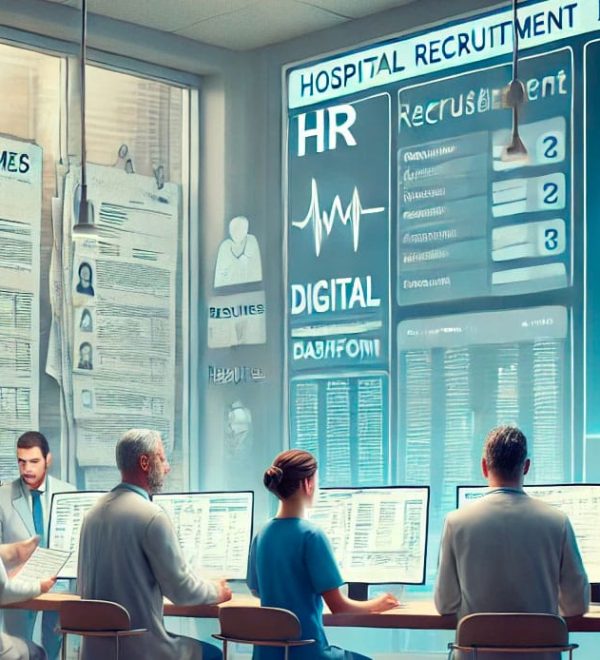Expert Insights
Latest Trends in Healthcare Engagement
Stay updated with the latest trends in healthcare and technology. This section offers key insights on how professionals are adapting to change and improving patient interactions. Learn about innovative strategies and real-world examples that demonstrate effective communication between healthcare teams, their patients, HCOs and Industry. By understanding these approaches, we can better tackle current challenges and create a more engaged healthcare environment. Join us as we explore what’s shaping the future of healthcare engagement and how Meplis is at the forefront of these developments.
Hospitals everywhere are facing a silent crisis — not a shortage of technology, but a shortage of people. From hiring delays to burnout and weak internal mobility, workforce inefficiencies now threaten the stability of entire health systems. This article explores how network intelligence and a connected talent ecosystem could redefine hospital workforce management for the decade ahead.
Hospitals have long played a central role in medical education — from grand rounds and specialist training to international CME events. Yet as healthcare becomes more digital, global, and data-driven, many hospitals find themselves unable to extend their expertise beyond their walls. Outdated systems, fragmented tools, and limited visibility have left valuable knowledge underutilized. This article explores why hospital-led education still struggles to scale — and how a more connected, data-based approach could change that.
Hospitals collect more data than ever before — yet few can use it to truly understand or improve the quality of care they deliver. This is not a failure of will or professionalism, but of structure. Healthcare remains a system where outcomes, processes, and patient experiences live in separate silos. Connecting them — without dictating clinical freedom — is the next evolution in quality management.
Hospital research operations are still too manual: duplicated feasibility, low site visibility, and slow start-up. Evidence from NIHR, HRA and large site surveys shows where time is lost—and how a hospital-owned Research Center can restore control, speed recruitment, and increase sponsor confidence.
Hospitals modernized patient records, but staff collaboration still relies on fragmented tools. McKinsey reports 31% of nurses may leave care within a year, while Deloitte finds 84% of executives see value in connected care—yet adoption lags when tools don’t fit workflows. With up to 15% efficiency gains possible by 2030, hospitals need platforms built for healthcare professionals, not patched-together systems.
Choosing a medical career is just the beginning—but what comes next isn’t always clear. From undefined growth paths to lack of mentorship, many HCPs find themselves navigating career development with little structure or support. This post unpacks the hidden challenges and explores how AI could help bring clarity and momentum.
Many healthcare professionals never hear about legitimate, paid opportunities to collaborate with pharma and medtech — from advisory boards to research consulting. This post explores why most HCPs are left out, what roles exist, and how a better system could give clinicians more visibility, control, and fair compensation.
Collaboration between HCPs and industry is essential—but most systems make it harder than it should be. From scattered portals to overwhelming emails and redundant workflows, today’s engagement model wastes time. This post explores what’s broken, how it affects your work, and what Meplis is building to create a smarter, centralized experience—designed around you.
Real-time case collaboration is becoming essential for clinical decision-making. This post explores how structured, secure peer input can help healthcare professionals improve outcomes, reduce errors, and act faster—without compromising privacy or workflow.
Medical specialty groups are scattered across tools like WhatsApp and LinkedIn—but these platforms fall short on structure, compliance, and real value for HCPs. In this post, we explore why healthcare professionals need a smarter, safer place to collaborate—and how the Meplis is designed to deliver exactly that.
Healthcare professionals are drowning in content—yet still struggle to stay current. From email fatigue to fragmented portals, the burden is real. Backed by Magnet4Europe data powered by Meplis, we explore why this matters and what HCPs really need to cut through the noise.
Despite billions invested, real-world evidence (RWE) still struggles to deliver lifecycle impact in Pharma and Medtech. Fragmented data, poor standards, and underuse in early R&D continue to limit ROI. Discover what’s needed to fix the system—and how smarter, connected RWE strategies can drive product success.
Post-market surveillance in pharma and medtech is overdue for transformation. Fragmented systems, manual workflows, and compliance barriers are slowing progress—while AI remains underutilized. Discover why smarter, AI-ready PMS strategies are becoming a competitive necessity.
Pharma and Medtech pour billions into targeted marketing, but HCP engagement keeps dropping. What’s going wrong? 🔍 Read more to uncover the key inefficiencies and smarter strategies for better results.














